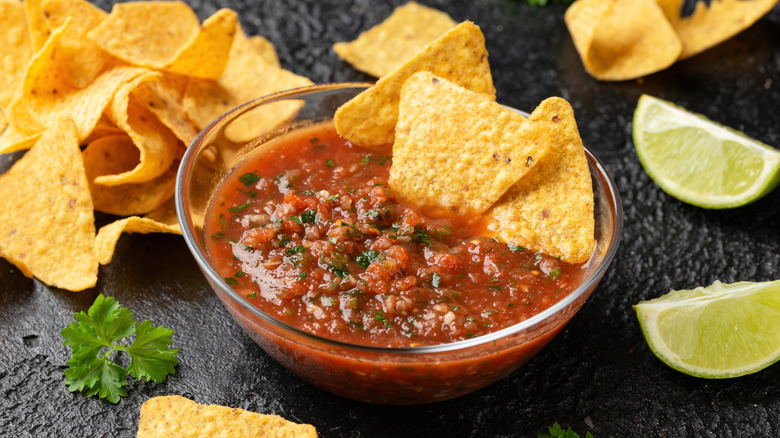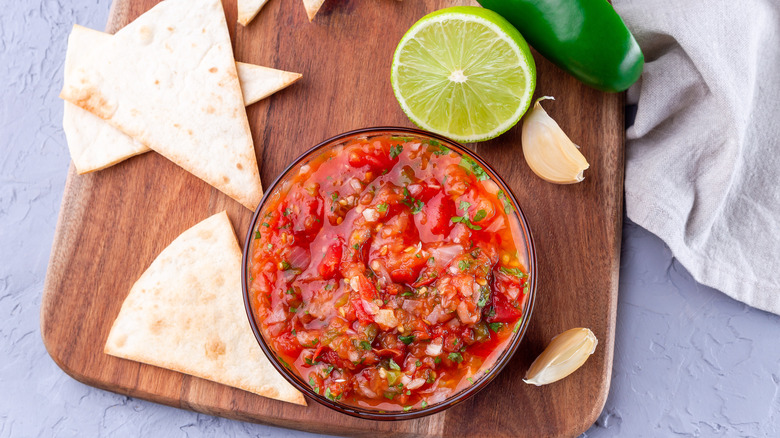The Step You're Forgetting To Take When Making Salsa That's Costing You Big Time
If you've dealt with enough salsa red flags when dining at Mexican restaurants, you know there's never a bad time to start making your own. There are lots of little tricks to pull extra flavor out of your concoction of tomatoes, chiles, and lime juice; which you'll probably be seasoning with cumin or black pepper. Just keep in mind that you don't always need spice to make your salsa sing. For example, you should always be letting your homemade salsa rest, even (especially) if you're still planning to add seasoning.
For salsa help, we spoke to David Montelongo Merlo, the chef de cuisine at Ceiba, a contemporary Mexican restaurant at Conrad Orlando at Evermore. Merlo stresses that homemade salsa needs time to relax before you season it, explaining, "Fresh ingredients, such as tomatoes, onions, chiles, cilantro, and lime juice, all have strong flavors and their own moisture. When you first blend or chop them, the flavors are sharp and separate."
Salsa can certainly be served right after you're finished mixing it — and hungry guests won't mind. Still, by allowing the salsa to rest, you give those sharp ingredients time to mingle, as Merlo notes. This gives the salsa a more balanced and blended flavor. Afterward, by all means, you can start seasoning.
Let your homemade salsa take it easy
How much sleep does your salsa need, so to speak? Well, your salsa requires much less time to rest than you do. David Montelongo Merlo suggests that you let homemade salsa rest for about 30 minutes to an hour, adding, "This gives the flavors from the fresh ingredients a chance to mend so the taste is balanced and harmonious." If you've blended your salsa ingredients, a designated rest may not be as necessary. But if you like your salsa chunky and textured, the ingredients will need time to stew in each other's juices. It's usually best to place your salsa in the fridge while it rests, especially if it ends up sitting for more than an hour — and some people let their salsa rest overnight.
If you're working with a standard salsa recipe, which doesn't require any pre-cooked ingredients, you shouldn't need to rest it for more than an hour. While you can make salsa with whatever ingredients you have handy, Merlo says that anything that's been cooked may need extra time to rest and blend with the other ingredients. "Some salsas, like those with roasted or cooked ingredients, can benefit from resting several hours to allow all the flavors to meld together," he notes. Resting is one of those easy steps where you genuinely have to do nothing at all, except try not to eat all the tortilla chips before the salsa's ready.

